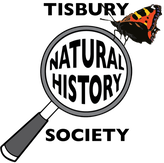|
Bats can live up to 30 years. After spending the winter hibernating, bats will now be fully active and feeding. At first light or dusk, on warm dry days, is the best time to look out for them. Some hunt high in the sky while others swoop low over water. The females, which will have been pregnant since the autumn mating season, will set up nursery colonies in May and then give birth to a single pup, usually in June. These pups are very small and, as bats are mammals, will be suckled until they learn to fly and hunt insects for themselves by August.
Although different species frequent different areas, a landscape generally favourable to bats includes varied sites to roost in, such as old buildings, caves, and hollow trees; hedgerows along which to commute to and from foraging areas, woods, copses, lakes, and ponds. This seems to be a rather good description of the Nadder Valley, and it seems to suit bats. Last year, the South Wiltshire Greater Horseshoe Bat Project carried out a programme of acoustic surveys using bat detectors across 40 locations in the Nadder Valley. Of the 18 bat species found in the UK, they detected 13 species, both common and rare. At the same time, a small stone mine was monitored, and this confirmed that it is used by several rarer bats, including the greater horseshoe bat. These data contribute significantly to the knowledge of bats in the area. Unfortunately, bat populations declined severely during the last century. In common with most bat species, those found in the UK feed on insects. Given that even a single tiny pipistrelle bat can eat more than 3000 insects in a night, the well documented fall in insect numbers in our countryside is likely to be contributing to this decline. If they cannot get sufficient food in autumn, when they are building up fat reserves to get them through the torpor and hibernation of winter, they will perish. They are also vulnerable to a range of other factors such as loss and fragmentation of habitat, destruction of roosts, and predation. Bats and their roosts are protected by law, but are still under threat from building and development work that affect the old buildings and trees where they roost or set up maternity colonies. by Andrew Graham Comments are closed.
|
Photo: Avocets (Izzy Fry)
The headers display photos taken by our members. Do get in touch via the Contact Form if you'd like to submit a photo for selection.
Archives
May 2024
Categories
All
|

 RSS Feed
RSS Feed